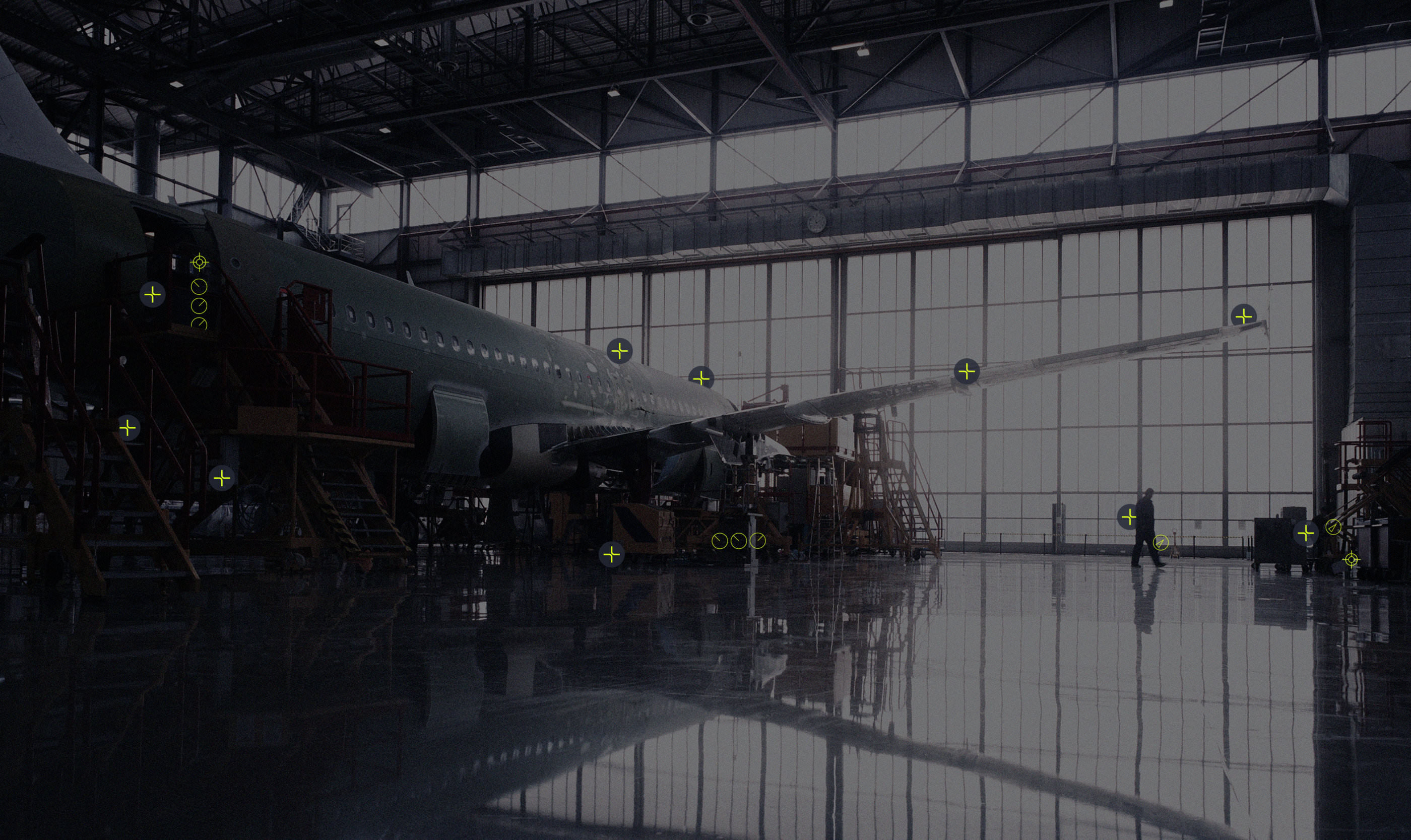
City walk with
history - augmented reality
brings history to life.
Walking around the beautiful Helsinki, it is possible to encounter different architectural styles - but it would be so nice to know a bit more about the buildings and statues you see. I guess joining a guided tour with a knowledgeable live guide would be best - but close second could be to have additional information, videos and pictures available in AR (augmented reality). Seeing an interesting building through the camera of your smartphone or via AR glasses, historical Helsinki comes alive.
Together with a popular Instagram account @helsinginhistoriaa and the creator behind it, Merilla Laitinen, Immersal has created a small city tour around the neoclassical center of Helsinki, around Senate Square, where we can see what the buildings looked like before, through historical photographs. All you need is a smartphone and Immersal App and you are ready to go!
First, start walking the route presented here on this map and try to stand approximately in the location which each picture here is showing. Then click the link with your phone and it should automatically open the Immersal App and you can see the historical picture.
Scroll down for the Finnish version.
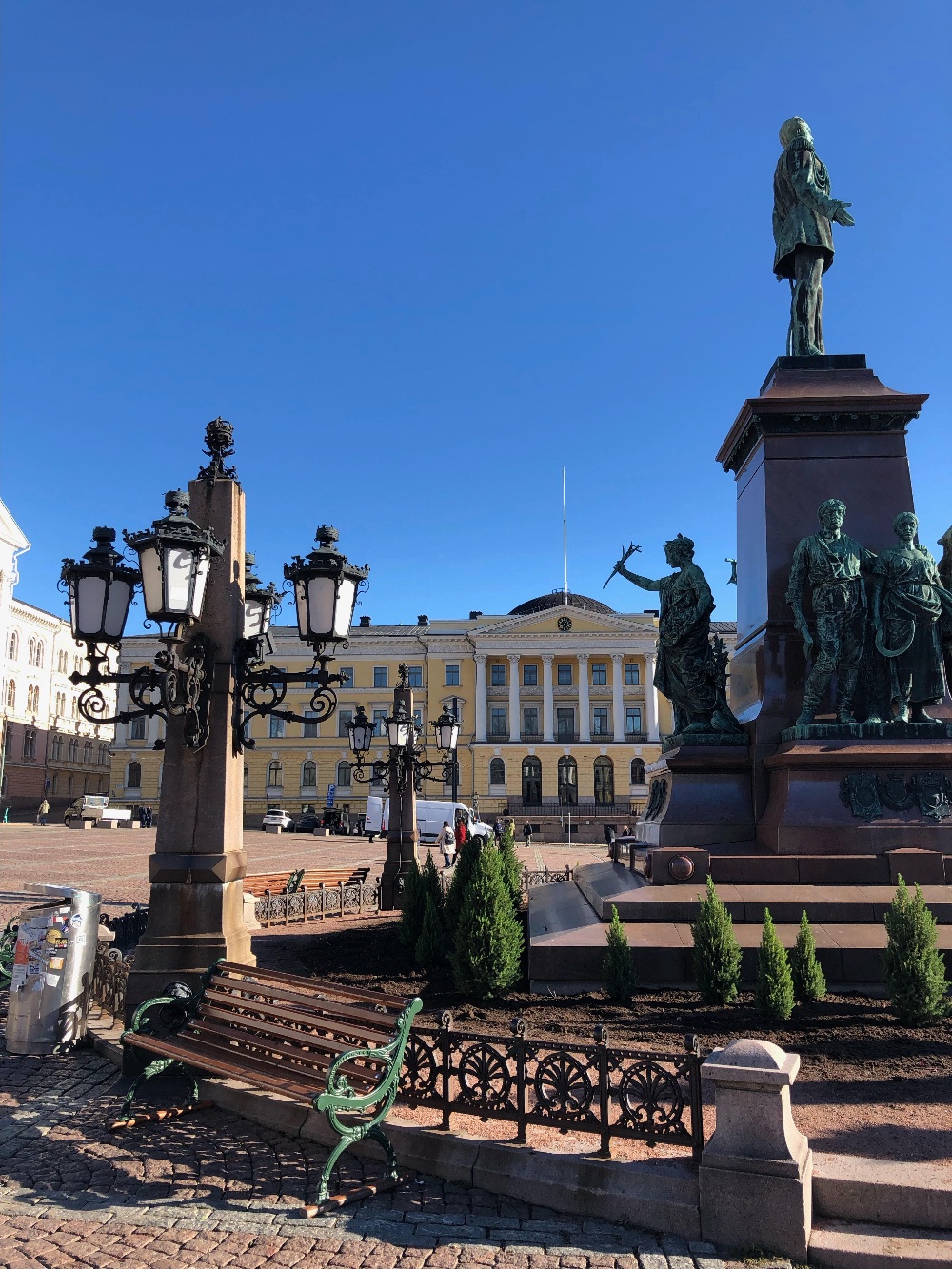
Statue of Alexander II
In the middle of the Senate square there is a collection of statues, which is hard not to notice. The statue, designed by Johannes Takanen and Walter Runeberg, was unveiled in 1894. The statue depicts Grand Duke Alexander II of Finland at the Helsinki Constituent Assembly in 1863. Alexander II is dressed in the uniform of a Finnish Guard officer. He was considered a good tsar in Finland, and the statue profiled itself as a gathering place for anti-Russian demonstrations during the repressive times of imperial rule.
In the statue collection, Alexander II is surrounded by Law (Lex), Work (Labor), Peace (Pax) and Light (Lux). Of these, Law (Lex) is on the southern edge - the goddess of justice with her lion, equipped with sword and shield. The figures were later interpreted as the Finnish Maiden and the Finnish Lion. On the western edge, i.e. on the side of the university's main building, is Work, i.e. a farming couple with an axe, a sickle and a grain sheaf. On the north side of the cathedral is Peace (Pax), the goddess of peace, surrounded by doves. The Light (Pax) is placed on the east side of the State Council castle. It consists of two figures - a goddess symbolizing the sciences and a cherub symbolizing the arts.
Statue of Alexander II. Photo details: Fred Runeberg, Helsinki City Museum, 1950s.
Please note that this link is meant to be used with smartphone (not desktop).

Government Palace
Government Palace on the eastern edge of Senate Square is one of architect Carl Ludvig Engel's monumental buildings around the square. Helsinki had become the capital of Finland in 1812 and the city needed facilities for the central administration. Construction work began in 1818 and the building was completed in 1822. The name was originally Senate House, because the building was made for the Finnish Senate, which met in the house between 1822 and 1918. After this, the name was changed to the current Governmental palace.
Probably Finland's most famous political murder took place in the building, when activist Eugen Schauman fatally shot Governor General Nikolai Bobrikov in 1904. Bobrikov died the following night. A commemorative plaque is attached to the staircase at the place of death.
Government Palace. Phot details: Volker von Bonin, Helsinki City Museum, 1981.
Please note that this link is meant to be used with smartphone (not desktop).
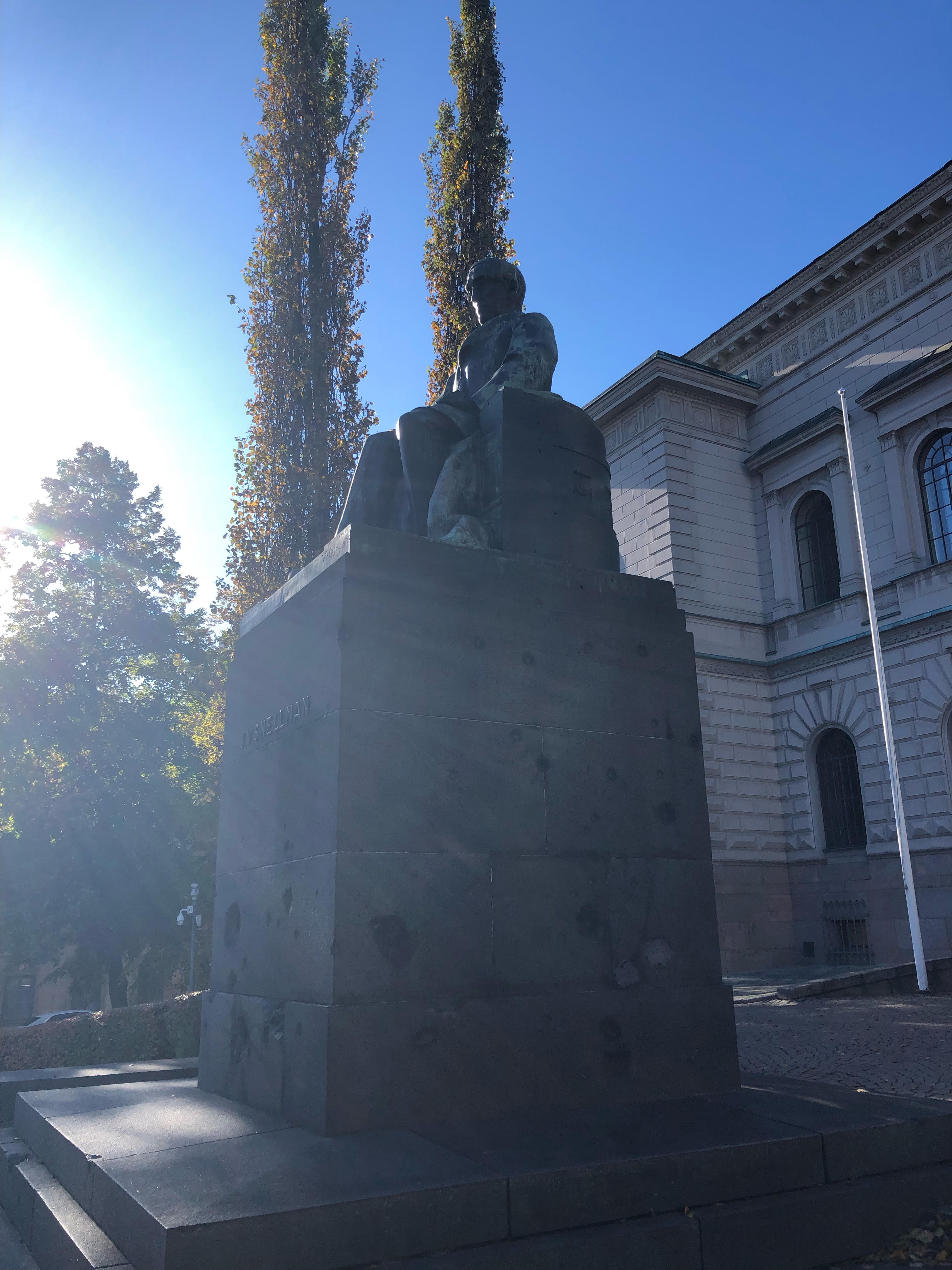
Statue of Snellman
J. V. Snellman (1806-1881) was an influential fennoman (a member or supporter of a nationalist political movement in 19th-century Finland that wanted to raise Finnish to the national language of the country) who promoted the status of the Finnish language during his lifetime. He received a memorial in Helsinki in 1923. The statue itself was sculpted by Emil Wikström, while the base and surroundings were designed by Eliel Saarinen.
The statue, which was financed with fundraising funds, had already been completed in 1916, but due to the First World War and the Finnish Civil War, the unveiling ceremony of the statue was delayed. However, the monument got to experience the war later - during the heavy bombing of Helsinki in February 1944, the pedestal of the statue was damaged and these traces are still visible today.
Statue of Snellman. Photo details: Aarne Pietinen Oy, Tourism in Finland collection, Historic Photo Collection, The Finnish Heritage Agency, 1940s.
Please note that this link is meant to be used with smartphone (not desktop).
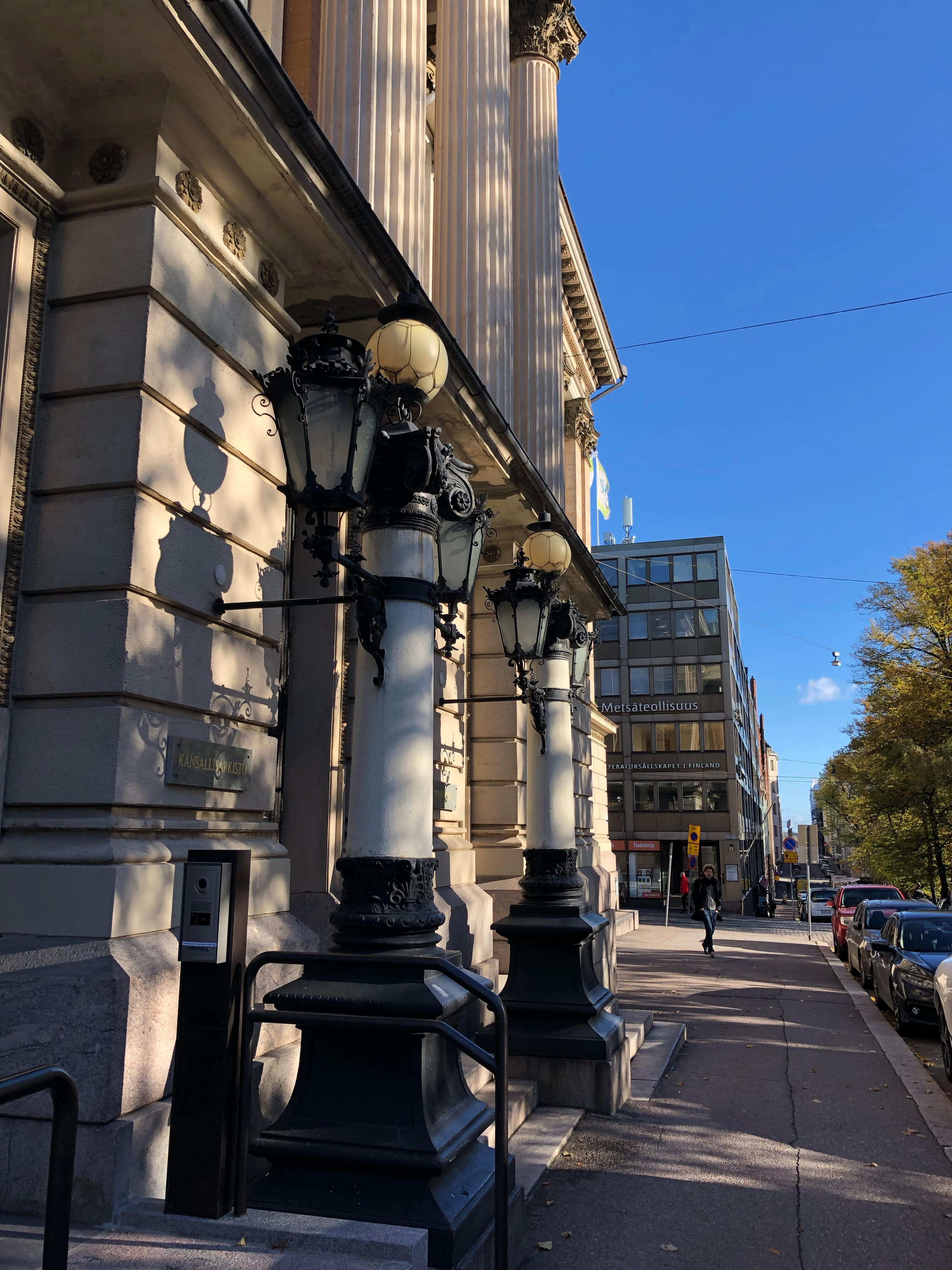
The National Archives of Finland
The building of the main office of the National Archives on Rauhankatu was completed here in 1890, and it was quite a modern archive building for its time. At that time, the archive was still known by its old name Valtionarkisto. The oldest document in the archive is from 1316.
Directly above, on the roof of the National Archives, you can see a sculpture complex formed by three statues. The middle of the statues symbolizes the Finnish Maiden. During the bombings of the Continuation War, the statue was damaged and lost its head. However, the detached head remained intact and could be reattached to the statue later.
The National Archives of Finland. Photo details: Eeva Rista, Helsinki City Museum, 1982.
Please note that this link is meant to be used with smartphone (not desktop).
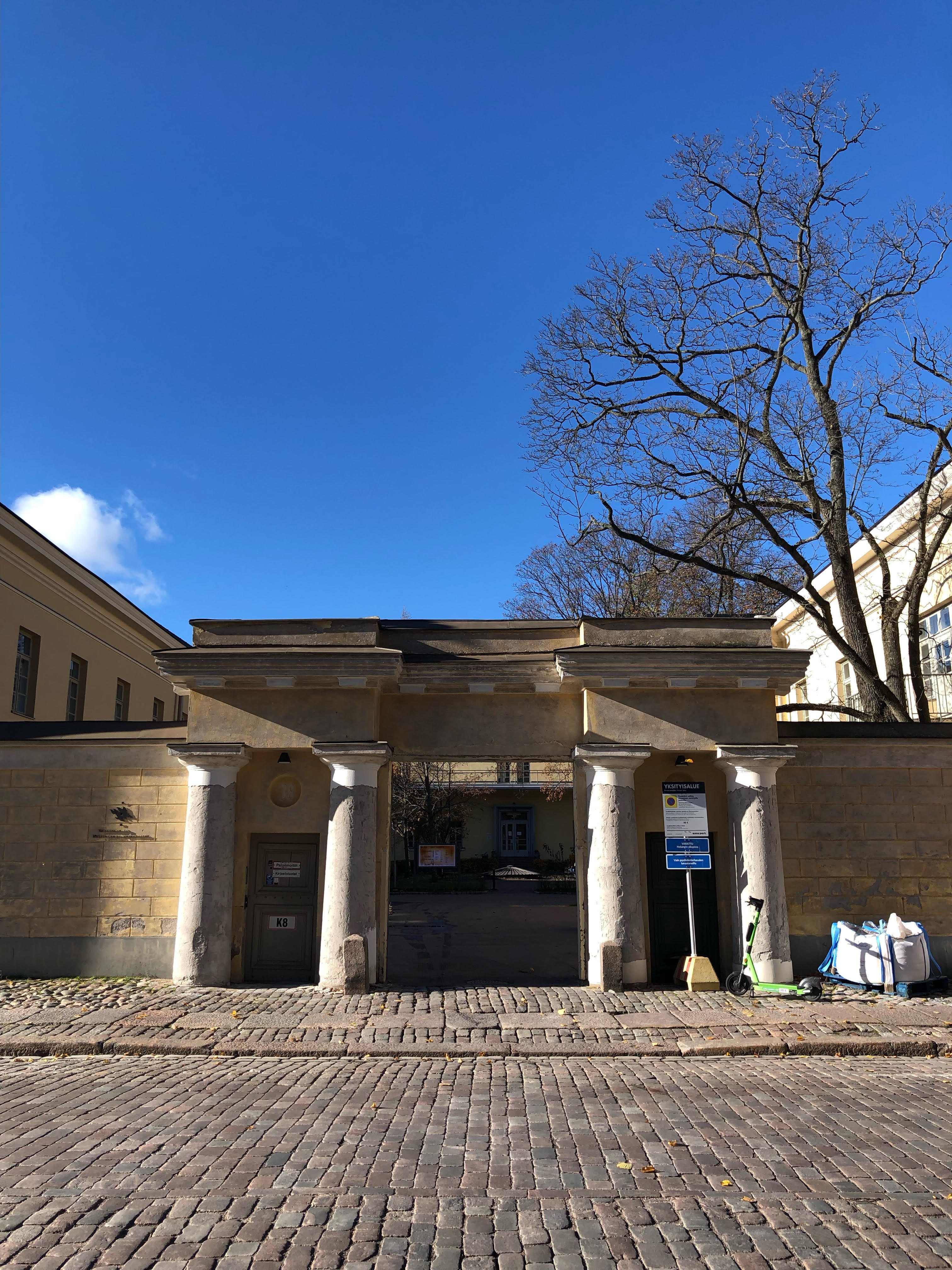
Topelia Building
This impressive gate used to lead to the hospital! A hospital operated in the Topelia block for more than 160 years.
Originally, a military boarding school building was completed here on Unioninkatu, where orphan boys were educated for the army. In 1832, a Russian military hospital started operating there. Hospital operations continued even after Finland gained independence, when the university central hospital moved into the buildings. In 1995, the hospital moved out and the premises were renovated for use by the University of Helsinki's Faculty of Humanities, which is also the current user of the block. At the same time, the block was named Topelia after Zachris Topelius, a professor of Finnish history and former rector of the university.
Topelia Building. Photo details: Erkki Voutilainen, Maaseudun Tulevaisuus, Journalistinen kuva-arkisto, Finnish Heritage Agency, 1956.
Please note that this link is meant to be used with smartphone (not desktop).

Aleksanteri II:n patsas
Senaatintorin keskellä kohoaa patsaskokonaisuus, jota on vaikea olla huomaamatta. Johannes Takasen ja Walter Runebergin suunnittelema patsas paljastettiin vuonna 1894. Patsaassa on kuvattu Suomen suuriruhtinas Aleksanteri II Helsingin säätyvaltiopäivillä vuonna 1863. Aleksanteri II on pukeutunut Suomen Kaartin upseerin univormuun. Häntä pidettiin Suomessa hyvänä tsaarina ja patsas profiloitui venäläisvastaisten mielenosoitusten kokoontumispaikaksi keisarivallan sortoaikoina.
Patsaskokonaisuudessa Aleksanteri II:a ympäröivät Laki (Lex), Työ (Labor), Rauha (Pax) ja Valo (Lux). Näistä Laki on eteläreunalla - oikeuden jumalatar leijonansa kanssa miekalla ja kilvellä varustettuna. Hahmot on myöhemmin tulkittu Suomi-neidoksi ja Suomen leijonaksi. Länsireunalla eli yliopiston päärakennuksen puolella sijaitsee Työ eli maanviljelijäpariskunta kirveen, sirpin ja viljalyhteen kanssa. Tuomiokirkon puolella pohjoisen puolella on Rauha eli rauhan jumalatar kyyhkyset ympärillään. Valo on sijoitettu itälaidalle Valtioneuvoston linnan puolelle. Se koostuu kahdesta hahmosta - tieteitä symboloivasta jumalattaresta ja taiteita symboloivasta kerubista.
Aleksanteri II. Vanhan valokuvan tiedot: Fred Runeberg, Helsingin kaupunginmuseo, 1950-luku.
Huomiothan että tämä linkki toimii älypuhelimella, ei tietokoneella.

Valtioneuvoston linna
Valtioneuvoston linna Senaatintorin itäreunalla on yksi arkkitehti Carl Ludvig Engelin monumentaalisista rakennuksista torin ympärillä. Helsingistä oli tullut Suomen pääkaupunki vuonna 1812 ja kaupunkiin tarvittiin tilat keskushallinnolle. Rakennustyöt alkoivat vuonna 1818 ja rakennus valmistui vuonna 1822. Nimenä oli alun perin Senaatintalo, koska rakennus oli tehty Suomen senaattia varten, joka kokoontuikin talossa vuosina 1822-1918. Tämän jälkeen nimeksi vaihtui nykyinen Valtioneuvoston linna.
Rakennuksessa tapahtui Suomen luultavasti tunnetuin poliittinen murha, kun aktivisti Eugen Schauman ampui kenraalikuvernööri Nikolai Bobrikovia kuolettavasti vuonna 1904. Bobrikov menehtyi seuravaana yönä. Surmapaikalle portaikkoon on kiinnitetty muistolaatta.
Valtioneuvoston linna. Vanhan valokuvan tiedot: Volker von Bonin, Helsingin kaupunginmuseo, 1981.
Huomiothan että tämä linkki toimii älypuhelimella, ei tietokoneella.

J. V. Snellmanin patsas
J. V. Snellman (1806-1881) oli vaikutusvaltainen fennomaani, joka eläessään edisti suomen kielen asemaa. Hän sai muistomerkin Helsinkiin vuonna 1923. Itse patsaan on veistänyt Emil Wikström, kun taas jalustan ympäristöineen suunnitteli Eliel Saarinen.
Keräysvaroin rahoitettu patsas oli valmistunut jo vuonna 1916, mutta ensimmäisen maailmansodan ja Suomen sisällissodan vuoksi patsaan paljastustilaisuus viivästyi. Muistomerkki sai kuitenkin kokea sodan myöhemmin - Helsingin suurpommituksissa helmikuussa 1944 patsaan jalusta vaurioitui ja nämä jäljet ovat yhä näkyvissä tänä päivänä.
Snellmanin patsas. Vanhan valokuvan tiedot: Matkailun edistämiskeskuksen kokoelma, Historian kuvakokoelma, Museovirasto, 1940-luku.
Huomiothan että tämä linkki toimii älypuhelimella, ei tietokoneella.

Kansallisarkisto
Rauhankadulla sijaitsevan Kansallisarkiston päätoimipaikan rakennus valmistui tähän vuonna 1890 ja se oli ajalleen varsin moderni arkistorakennus. Tällöin arkisto tunnettiin vielä vanhalla nimellään Valtionarkisto. Arkiston vanhin asiakirja on vuodelta 1316.
Suoraan yläpuolella, Kansallisarkiston katolla, näkyy kolmen patsaan muodostama veistoskokonaisuus. Keskimmäinen patsaista symboloi Suomi-neitoa. Jatkosodan pommituksissa patsas vaurioitui ja menetti päänsä. Irronnut pää säilyi kuitenkin ehjänä ja voitiin liittää takaisin patsaaseen myöhemmin.
Kansallisarkisto. Vanhan kuvan tiedot: Eeva Rista, Helsingin kaupunginmuseo, 1982.
Huomiothan että tämä linkki toimii älypuhelimella, ei tietokoneella.

Topelia
Tästä näyttävästä portista on ennen ollut kulku sairaalaan! Topelia-korttelissa toimi nimittäin sairaala yli 160 vuoden ajan.
Alun perin tähän Unioninkadulle valmistui sotilaallinen sisäoppilaitos, jossa orpopoikia koulittiin armeijaa varten. Vuodesta 1832 paikalla aloitti toimintansa venäläinen sotilassairaala. Sairaalatoiminta jatkui myös Suomen itsenäistyttyä, jolloin rakennuksiin muutti yliopistollinen keskussairaala. Vuonna 1995 sairaala muutti pois ja tilat kunnostettiin yliopiston humanistisen tiedekunnan käyttöön, joka on myös korttelin nykyinen käyttäjä. Samalla kortteli sai nimen Topelia Suomen historian professorin ja yliopiston entisen rehtorin Zachris Topeliuksen mukaan.
Topelia. Vanhan kuvan tiedot: Erkki Voutilainen, Maaseudun Tulevaisuus, Journalistinen kuva-arkisto, Museovirasto, 1956.
Huomiothan että tämä linkki toimii älypuhelimella, ei tietokoneella.